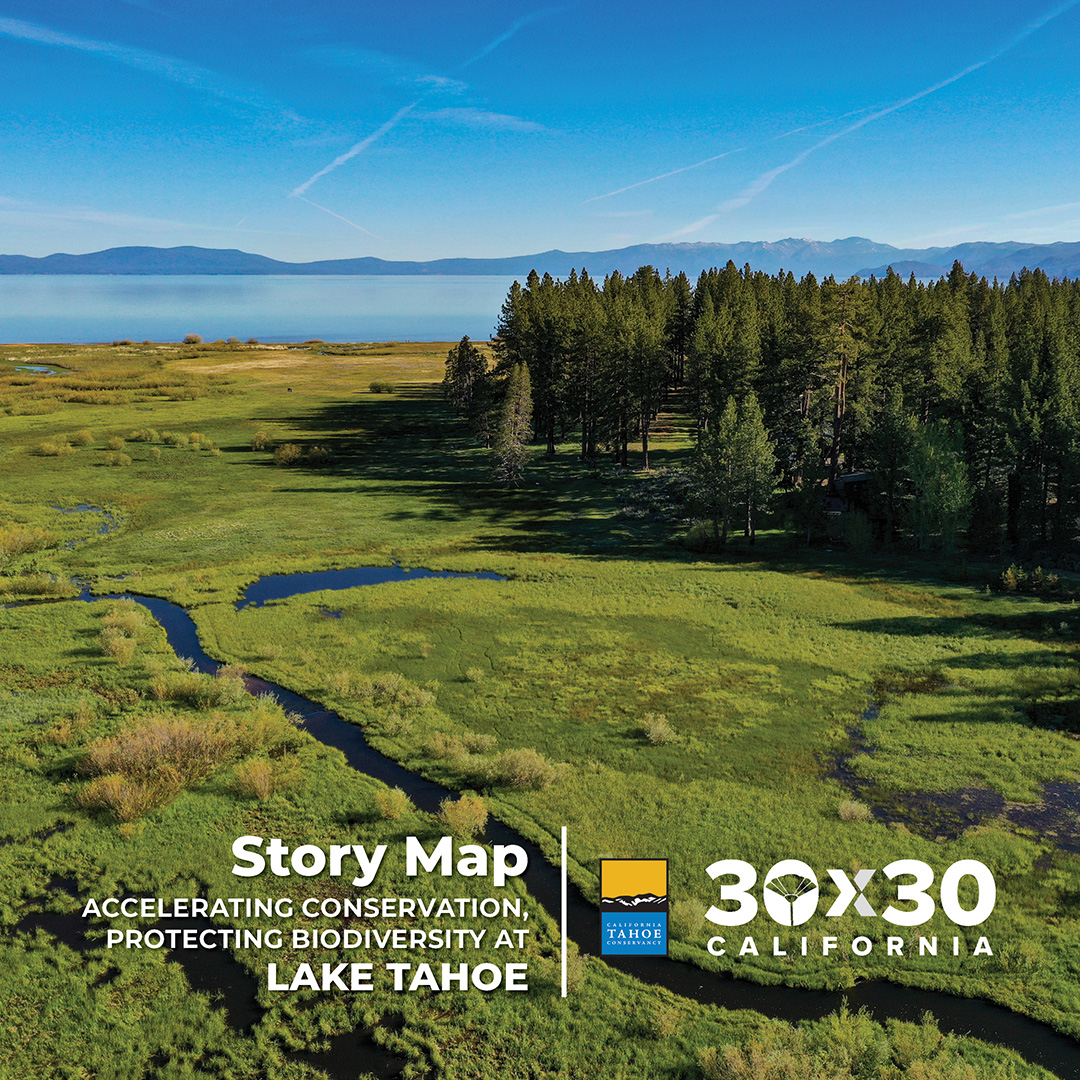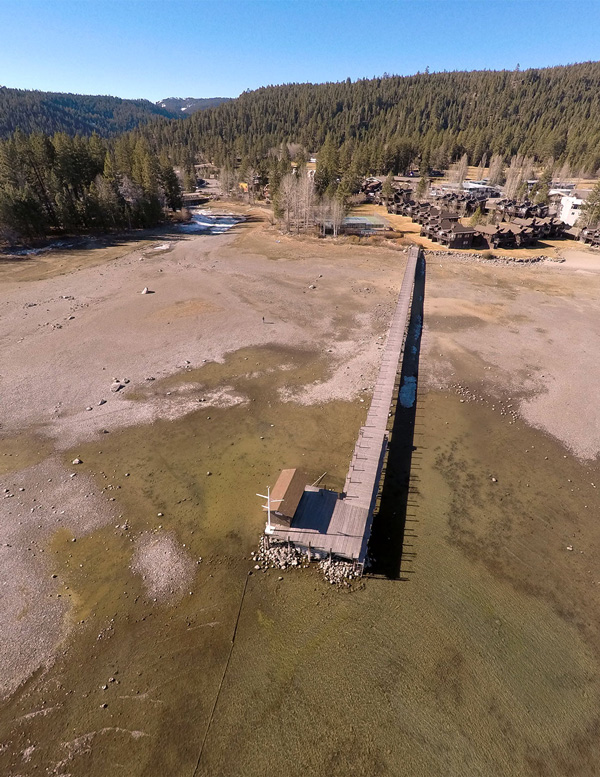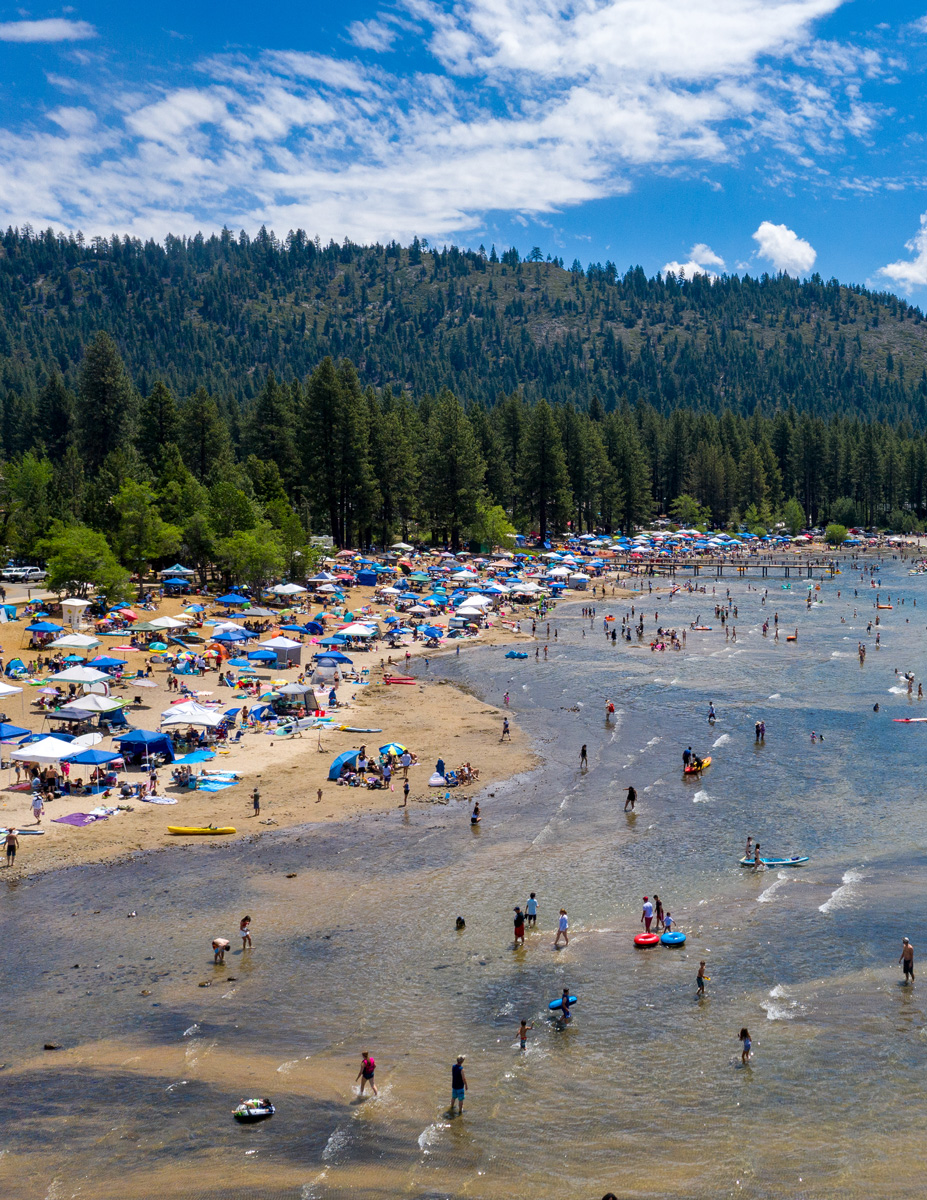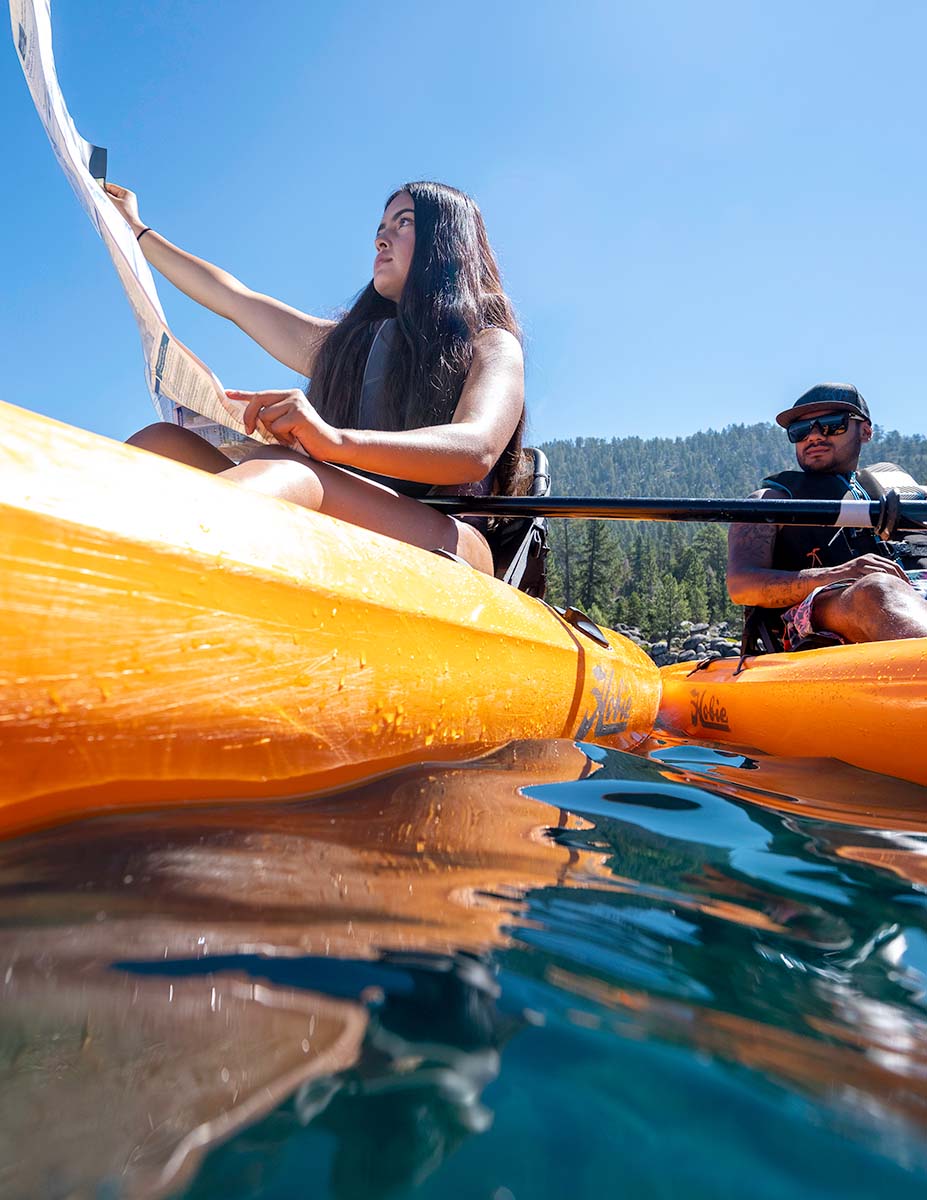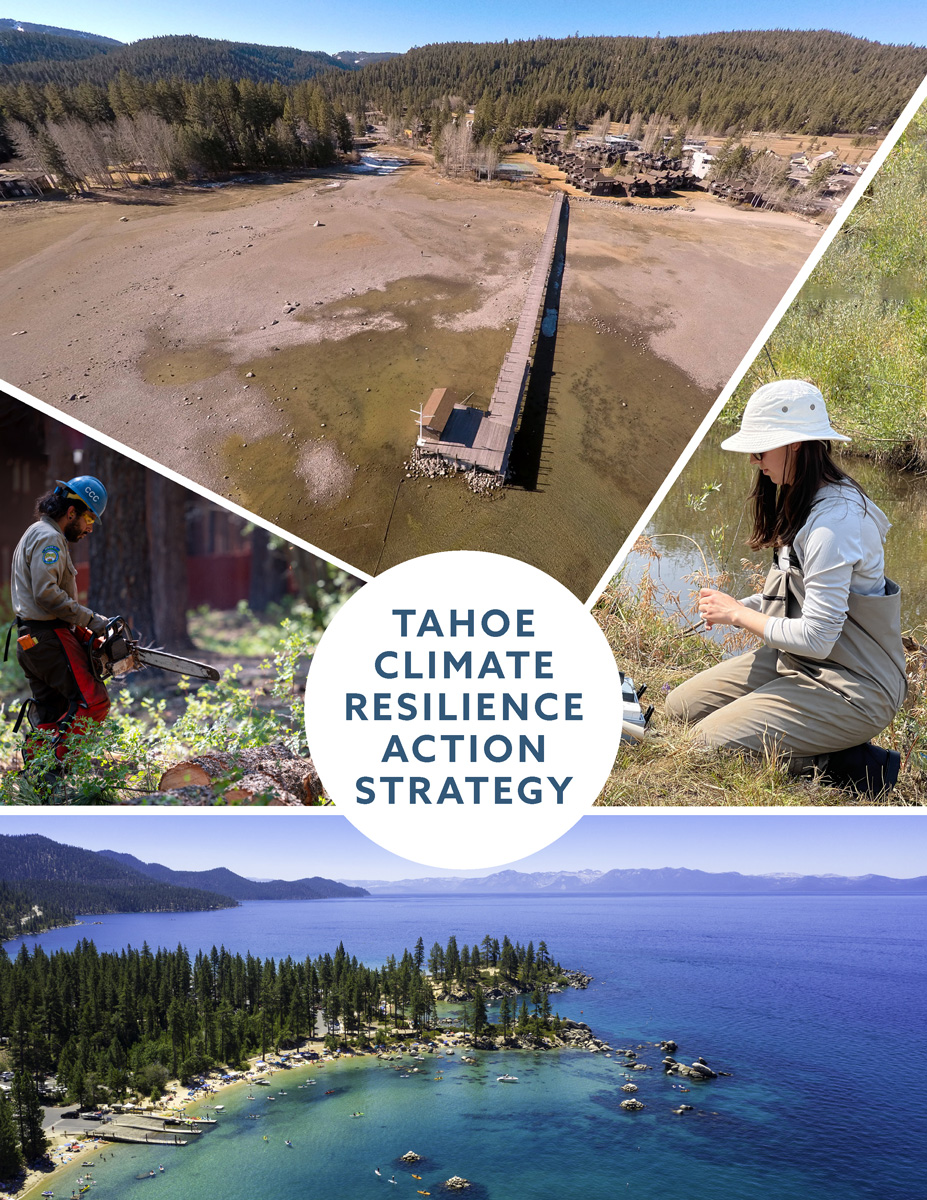
Climate Adaptation and Biodiversity
Throughout our work, we integrate activities to conserve biodiversity, adapt to climate change, and reduce greenhouse gas emissions via the Conservancy’s Landscape Resilience Program. The Conservancy also supports Basin partners by coordinating with state agencies and providing updated climate science to inform restoration planning and ongoing management. Along with work through the Conservancy’s Landscape Resilience Program, these activities work directly to help achieve statewide goals including 30×30, Nature Based Solutions, and the Lake Tahoe Climate Resilience Strategy.
Biodiversity
The State of California is committed to conserving 30 percent of its lands and coastal waters by 2030. The Conservancy and its partners are integrating California’s 30×30 goals into projects by restoring ecological functions and managing Tahoe lands for a more resilient future. Learn more.
Story Map: Accelerating Conservation, Protecting Biodiversity
The Conservancy is advancing California’s 30×30 initiative by:
- Acquiring sensitive lands,
- Restoring ecological function, and
- Building a more resilient future under climate change.
Climate Change Adaptation
Resources about climate change impacts to the Lake Tahoe Basin and actions Basin partners are taking to protect Tahoe’s natural resources and communities.
Vulnerability Assessment
State-of-the-art information on how patterns of temperature and precipitation will change, and how these patterns will affect the things people care about.
Tahoe Climate Adaptation Primer
A high-level look at climate change impacts at Lake Tahoe and highlights of ongoing adaptation work by federal, tribal, state, local, and private-sector partners throughout the Tahoe Basin.
Tahoe Climate Adaptation Action Portfolio
Detailed list of ongoing and planned actions by many Basin partners to accelerate adaptation in the Tahoe Basin.
Tahoe Climate Resilience Action Strategy
An interagency regional strategy to advance equity, create jobs, and build resilience for the Lake Tahoe Basin’s natural resources, 57,000 residents, and 15 million annual visitors.
Story Map – Tahoe’s Climate Future
Interactive maps, graphics, and videos exploring how climate change is already affecting Lake Tahoe, and how Lake Tahoe Basin partners are adapting.
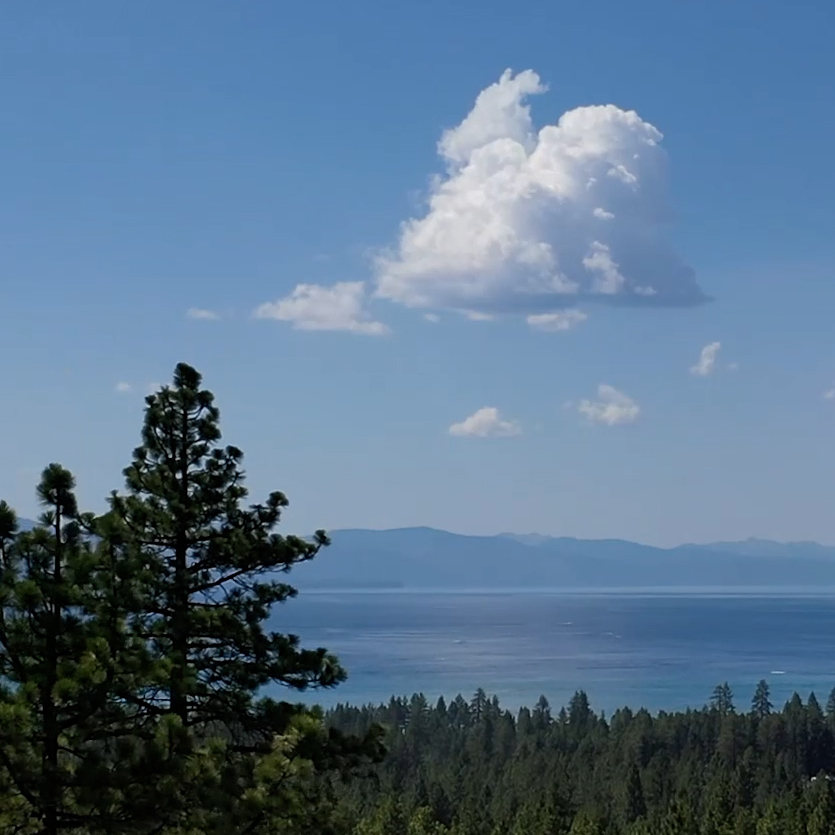
Climate Change Adaptation at Lake Tahoe
Climate change now affects everything in the Lake Tahoe Basin. Climate scientists project increasingly common weather extremes that will transform Tahoe, with impacts on lake clarity, natural resources, communities, and the economy. Climate change has already affected Conservancy facilities and restoration projects, and will continue to challenge how the Conservancy implements its mission in the future.
The Conservancy’s strategic plan includes a goal to foster Basinwide climate change adaptation and sustainable communities. To achieve this goal, the Conservancy focuses on four areas:
1. Developing the Lake Tahoe Climate Adaptation Action Portfolio (CAAP)
The CAAP is an integrated initiative to accelerate how resource management, infrastructure, and economy adapt to climate change in the Basin. The CAAP encompasses natural resources, public health and safety, recreation, infrastructure, and the economy and is being developed and implemented in partnership with peer agencies and stakeholders. The first part of the portfolio assesses the Basin’s vulnerability to climate change impacts, while the action portfolio specifies agency commitments to adaptation projects and programs.
2. Providing grants to support climate change adaptation
The Conservancy uses available funding to accomplish its mission and Strategic Plan by providing grants to Basin partners for planning, implementation, monitoring, and technical assistance.
3. Adapting the Conservancy’s own programs
The Conservancy is adapting its own programs and land management to changing climate conditions by integrating climate science and economics throughout its work.
4. Engaging partners and collaborating with scientists
The Conservancy will continue to coordinate California state agency adaptation planning and investments in the Basin, and collaborate with scientists and researchers to advance science that supports restoration and adaptation.
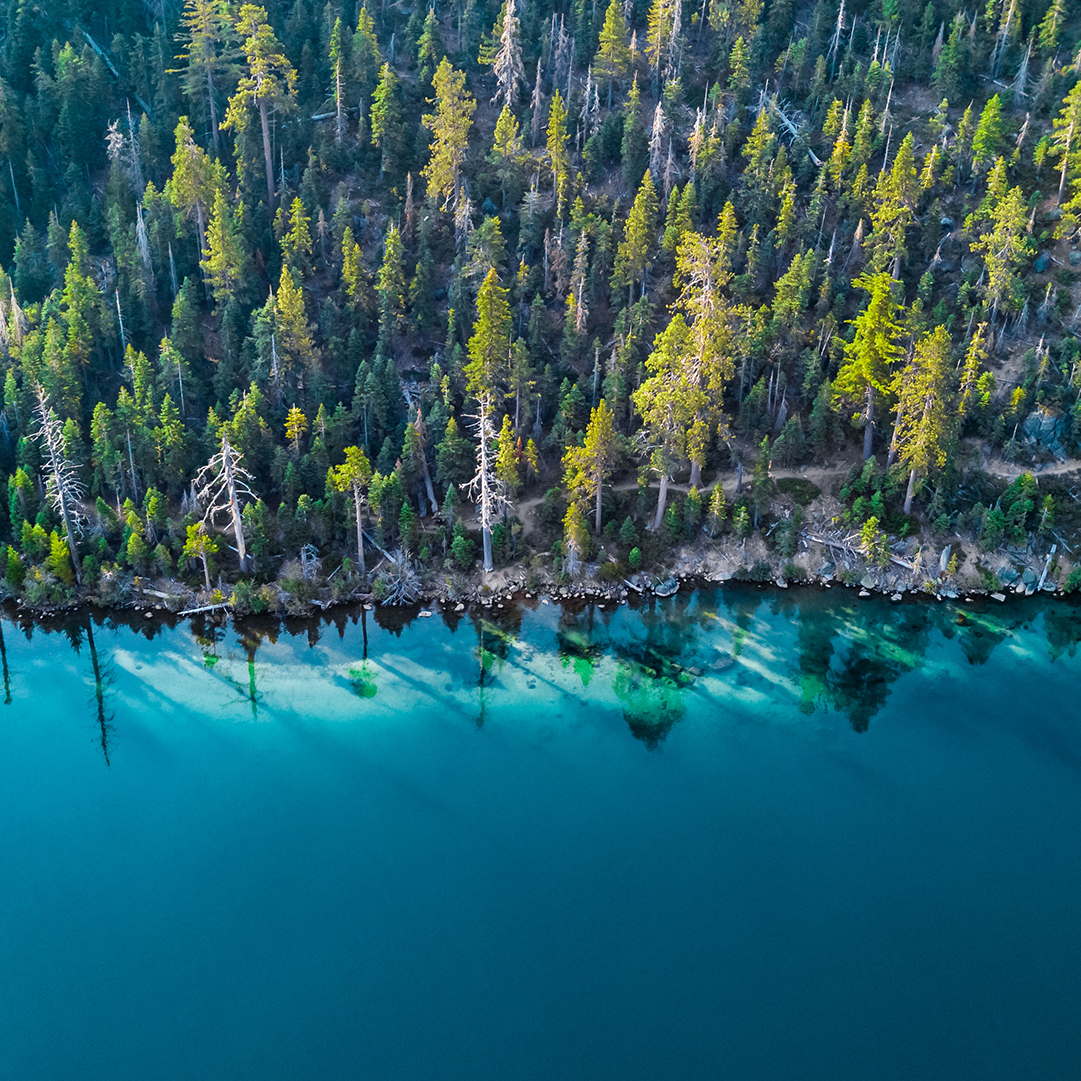
Climate Change Adaptation
Climate change now affects everything in the Lake Tahoe Basin. Climate scientists project increasingly common weather extremes that will transform Tahoe, with impacts on lake clarity, natural resources, communities, and the economy. Climate change has already affected Conservancy facilities and restoration projects, and will continue to challenge how the Conservancy implements its mission in the future.
The Conservancy’s strategic plan includes a goal to foster Basinwide climate change adaptation and sustainable communities. To achieve this goal, the Conservancy focuses on four areas:
1. Developing the Lake Tahoe Climate Adaptation Action Portfolio (CAAP)
The CAAP is an integrated initiative to accelerate how resource management, infrastructure, and economy adapt to climate change in the Basin. The CAAP encompasses natural resources, public health and safety, recreation, infrastructure, and the economy and is being developed and implemented in partnership with peer agencies and stakeholders. The first part of the portfolio assesses the Basin’s vulnerability to climate change impacts, while the action portfolio specifies agency commitments to adaptation projects and programs.
2. Providing grants to support climate change adaptation
The Conservancy uses available funding to accomplish its mission and Strategic Plan by providing grants to Basin partners for planning, implementation, monitoring, and technical assistance.
3. Adapting the Conservancy’s own programs
The Conservancy is adapting its own programs and land management to changing climate conditions by integrating climate science and economics throughout its work.
4. Engaging partners and collaborating with scientists
The Conservancy will continue to coordinate California state agency adaptation planning and investments in the Basin, and collaborate with scientists and researchers to advance science that supports restoration and adaptation.
Integrated Vulnerability Assessment of Climate Change in the Lake Tahoe Basin
Climate change is amplifying the background stressors on natural resources, infrastructure, and communities in the Lake Tahoe Basin (Basin). Land managers and policy-makers are increasing the Basin’s resilience and ability to adapt. Doing this now protects people and nature, and saves money. The Integrated Vulnerability Assessment of Climate Change in the Lake Tahoe Basin provides residents, visitors, businesses, and public agencies with state-of-the-art information on how patterns of temperature and precipitation will change, and how these patterns will affect the things people care about. The common scenarios and analyses provided will help public agencies and stakeholder organizations anticipate climate change implications, and better design and maintain their future projects that improve the quality of life, land, and waters in Tahoe.
Documents
Integrated Vulnerability Assessment of Climate Change in the Lake Tahoe Basin [PDF 4MB]
Technical Memos [PDF 2MB]
- Lake Tahoe Vulnerability Assessment
- Aquatic Resources Vulnerability Assessment
- Watershed Hydrology & Streamflow Vulnerability Assessment
- High-Elevation Groundwater Vulnerability Assessment
- Low-Elevation Groundwater Vulnerability Assessment
- Soil Moisture & Infiltration Vulnerability Assessment
- Forest Biological Diversity Vulnerability Assessment
- Forest Ecosystem Dynamics Vulnerability Assessment
- Riparian and Aspen Ecosystems Vulnerability Assessment
- Meadow Ecosystems Vulnerability Assessment
- Wildlife Connectivity Vulnerability Assessment
- Public Health Vulnerability Assessment
- Washoe Cultural Resources Vulnerability Assessment
- Lake Tahoe Surface Elevation Projections
- Recreation Resources Vulnerability Assessment
- Lake Tahoe Basin Infrastructure Vulnerability Assessment
Additional documents available by request
- Climate Change Vulnerability Assessment of Infrastructure Systems in the Lake Tahoe Basin Project
- Climate Change Adaptation Actions Assessment and Potential Performance Measures for Built Infrastructure in the Tahoe Basin
- Tahoe Basin Adaptation Assessment: Economic Analysis
- Tahoe Basin Vulnerability Assessment: Economic Analysis
Request copies of these additional documents. (Documents are unavailable on the website because of document size and accessibility limitations).


